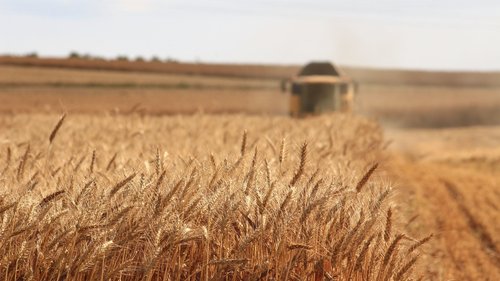Development of Canada Prairie Spring Red Cultivars for Western Canada

Written by: Ian Doig
Canada is the fifth largest wheat producing nation in the world, and most of the nation’s crop is grown on the Prairies. As wheat represents such a foundational part of the region’s farm economy, the importance of cultivar development is self-evident. “It’s very, very critical to continuously develop new varieties of CPS wheat for Western Canada,” said Harpinder Randhawa, research scientist and wheat breeder with the Agriculture and Agri-Food Canada (AAFC) Lethbridge Research and Development Centre. CPS breeding and end-use quality has evolved over the years, he added.
“We do three levels of cultivar improvement,” said Randhawa. “We look into their economic performance, disease package and resistance to various biotic and abiotic stresses. We also either maintain or improve the functional quality and use quality of wheat.”
CPSR varieties have typically exhibited protein, hardness and gluten strength in the medium category. While protein and hardness characteristics have remained in this desirable range, the development of various types of bread by grain purchasing nations has changed market requirements for gluten characteristics. Demand has pushed breeders to increase gluten strength to where it is on par with CWRS varieties and even beyond.
HY2090 is a Canada Prairie Spring Red (CPSR) cultivar Randhawa and his AAFC team have developed with supplementary funding under the most recent five-year Canadian National Wheat Cluster. Now in the seed production stage, it has been given the name AAC Westlock. The moniker is a tip of the hat to the town of Westlock, which is located north of Edmonton where CPS acreage is particularly high. It exhibits the qualities end-users demand as well as a strong agronomic package. AAC Westlock is six to seven per cent higher yielding than control variety AAC Penhold. A semi-dwarf cultivar preferred by farmers, it has excellent straw strength. The variety’s very good disease package includes resistance to FHB, leaf rust, stripe rust, stem rust and common bunt as well as to stem rust varieties not yet prevalent in Canada. In the aggregate, these positives add up to an economic win on a farmer’s balance sheet.
Notably, AAC Westlock was developed with the assistance of the double haploid breeding process and genetic marker technology in a mere six years, whereas 10 years has been more typical. “Genomic selection is one of the tools that we have,” said Randhawa. “We try to deploy all the breeding tools that are available to us to aid in making selections or predictions for development of new cultivars.” The new variety will be marketed by SeCan and is expected to be available for purchase by farmers in 2024.
As pleased as he is with this latest breeding success story, Randhawa emphasized that cultivar improvement is an ongoing process that responds to the evolving needs of farmers and end users. The low moisture conditions experienced during the 2021 and 2022 growing seasons seriously impacted crops in various regions of the Prairies. In response, the AAFC breeding program is now examining its germplasm stock for traits that can boost the resilience of crops in the face of harsh summer conditions. “The last couple of years, we have been hit very hard with drought and heat, and we are looking into germplasm that can help us develop cultivars that are resistant to abiotic stresses, especially drought,” said Randhawa.